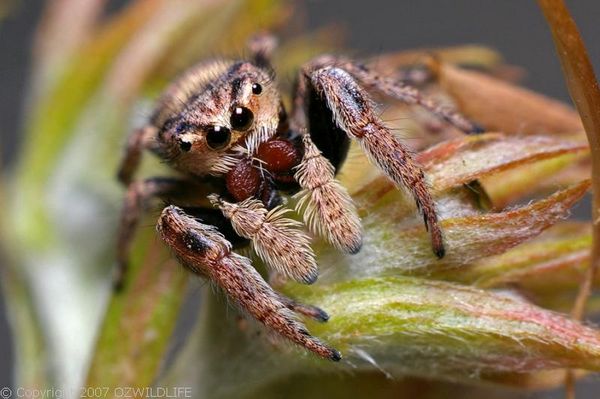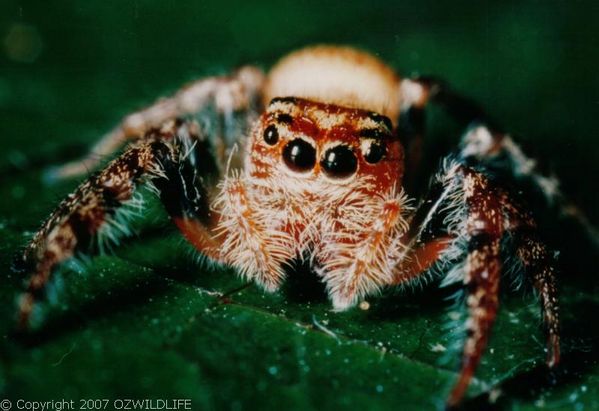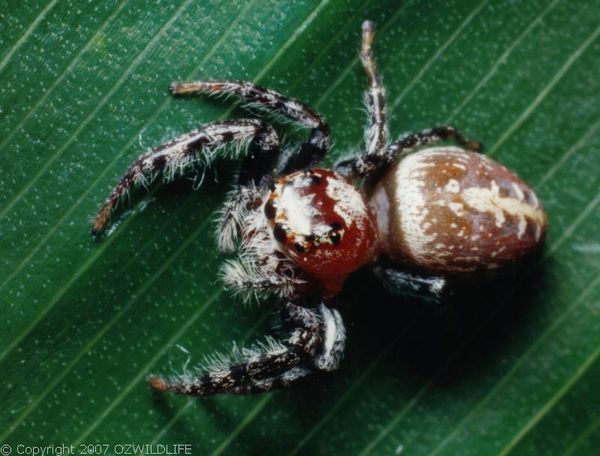|

Jumping spider
Photograph copyright: ozwildlife - all rights reserved. Used with permission.
|

Jumping spider. close up of head.
Photograph copyright: ozwildlife - all rights reserved. Used with permission.
|

This is one of the larger Brisbane jumping spiders, about 1cm long. This shot was taken with flash off the camera. A white card reflector was used to bounce some light into the shadows.
Photograph copyright: ozwildlife - all rights reserved. Used with permission.
|
|
|
JUMPING SPIDER FACTS |
Description
Opisthoncus jumping spiders have large eyes and short stout legs. The first pair of legs have strong spines. The eyes are arranged in two rows and the first pair are large and forward facing. They can turn their head to look at things around them. The usual body colours are grey, brown and black although some species have distinctive and colourful surface patterns. They build no web but often construct silk sacs in which they rest and moult. They can jump several centimetres.
Size
most are small up to about 10mm
Habitat
common in shrubs and trees, on the ground, and around railings and ledges on buildings.
Food
insects such as flies and moths that they pounce on. Some species eat other spiders.
Breeding
Jumping Spiders build silk egg sacs in leaves and under bark
Notes
Many jumping spiders are harmless. Some will bite if roughly handled causing mild local pain, but no long-lasting effects.
Classification
| Class: | Arachnida | | Order: | Araneomorphae | | Family: | Salticidae | | Genus: | Opisthoncus | | Species: | sp | | Common Name: | Jumping Spider |
Relatives in same Genus
Biting Jumping Spider (O. mordax)
Jumping Spider (O. polyphemus)
|
|

